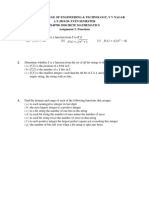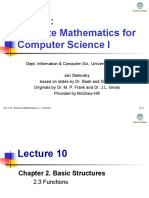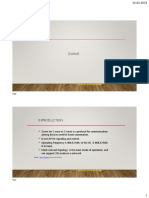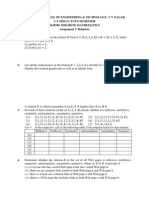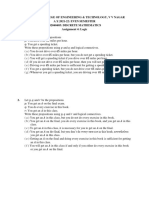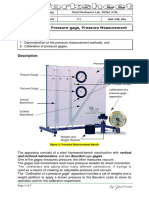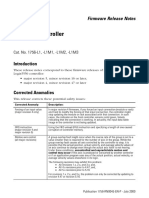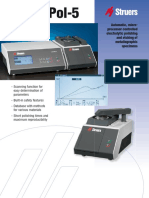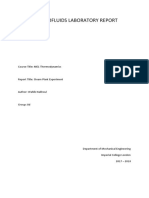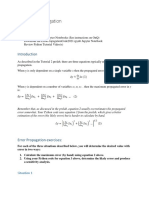0% found this document useful (0 votes)
92 views5 pagesDiscrete Math: Functions Quiz
The document contains 15 multiple choice questions related to functions and their properties like one-to-one, onto, composition, inverse, domain and range. It also includes questions about encoding data in bits and bytes. Some examples are worked out to determine the domain, range and whether a function is one-to-one or onto.
Uploaded by
Kevin ModiCopyright
© © All Rights Reserved
We take content rights seriously. If you suspect this is your content, claim it here.
Available Formats
Download as PDF, TXT or read online on Scribd
0% found this document useful (0 votes)
92 views5 pagesDiscrete Math: Functions Quiz
The document contains 15 multiple choice questions related to functions and their properties like one-to-one, onto, composition, inverse, domain and range. It also includes questions about encoding data in bits and bytes. Some examples are worked out to determine the domain, range and whether a function is one-to-one or onto.
Uploaded by
Kevin ModiCopyright
© © All Rights Reserved
We take content rights seriously. If you suspect this is your content, claim it here.
Available Formats
Download as PDF, TXT or read online on Scribd
/ 5
